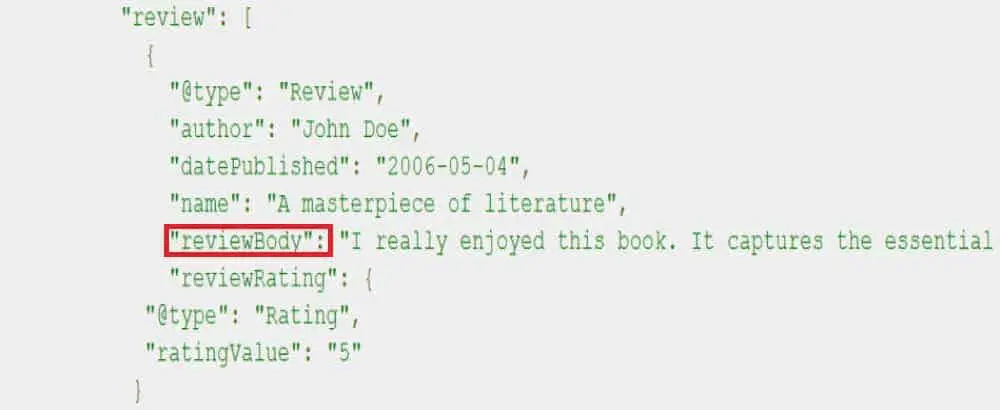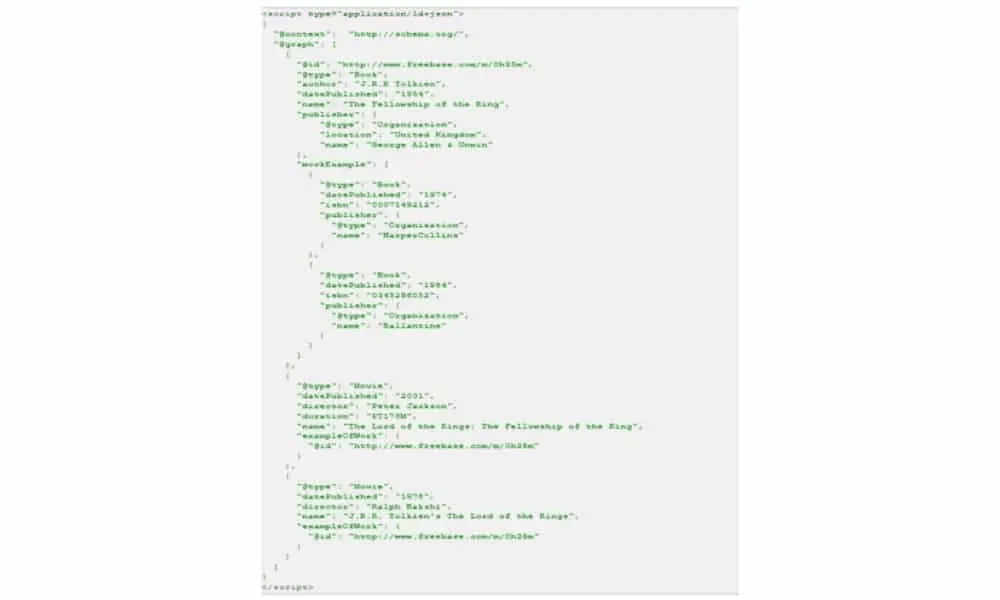Five tips on how to optimise your SaaS site’s structured data
How sites present information to Google is critical to their SERP rankings. That’s especially true of e-commerce sites, like those in the SaaS field. Structured data is an important way to offer Google clues as to the meaning of your pages. It can also open up exciting opportunities for search result features and enhancements.
If you have an SaaS business, you need to be using structured data properly. Our five tips are designed to point you in the right direction. If you’re well-versed in SEO and coding, you may want to skip straight down to those tips. If your expertise is more to do with market research than keyword research, you might need a quick tutorial on structured data and SEO.
Book a Consultation
Structured Data in Brief
Structured data is a way of presenting information on a webpage. It’s important to SEO as it can provide explicit clues to Google as to the meaning of the page. In their own introduction to structured data, Google define it as:
‘a standardized [sic] format for providing information about a page and classifying the page content’
The search engine uses structured data to understand pages. They also use it to gather information about the web in general.
There’s another important way that structured data applies to SEO. It is used by Google for special search result features and enhancements. Only pages using structured data correctly are eligible for those features and enhancements. They include Google’s knowledge panels, news carousels and direct answers.

Structured data is coded using in-page markup on the page that the information refers to. Most good structured data will use vocabulary as set down by schema.org. Schema is more or less a rulebook on the vocabulary you should use. It’s not mandatory to stick to Schema’s rules. By doing so, you do know you’re using vocabulary that Google understands.
Google search supports structured data in three formats. Those are JSON-LD, Microdata and RDFa. You can use any of the three, but it is JSON-LD which Google recommend. In the same way as sticking to Schema vocabulary, it makes sense to use the JSON-LD format. It is that format which our tips will focus on.
JSON-LD Format Structured Data
JSON-LD stands for JavaScript Object Notation – Linked Data. At its simplest, it is JS notation embedded in a <script> tag in the page head or body. For the sake of SEO, it’s used to represent to Google the data linked to a particular page. There are a few main reasons why JSON-LD is the recommended format for structured data.
It is more flexible and scalable than the other alternatives. With JSON-LD, you can add and edit structured data in one place. That’s wherever it’s pasted in the HTML. You have to add and edit Microdata spread throughout the HTML of a page.
Google can also read JSON-LD data when it’s dynamically injected in a page’s contents. For instance, by JS code or in embedded widgets in a content management system.
Now that you’re up to speed on structured data and JSON-LD, it’s time to turn to our tips. The quintet of tips aim to cover a wide range of advice and are as follows:
- Testing & Learning About Your Structured Data
- Thinking Templates Rather Than Page-By-Page
- Reviews; Where & How to Add Review Markup
- Managing Markup on Your Category Pages
- Adding Multiple Structured Data Types on One Page
1. Testing & Learning About Your Structured Data
You need your structured data to be valid and free from errors. If it’s not, Google won’t recognise it. Even if you’re very experienced with JSON-LD, you should test your data over and over. It’s the only way to consistently avoid errors. Google provide their own structured data testing tool for the purpose.

The tool is great and can be used to perform loads of really helpful functions. It lets you either ‘fetch URL’ or test a ‘code snippet’. In the former case, the tool will tell you if Google can see the markup on the particular page. In the latter, it will flag up a variety of different problems that may feature in your code.
Those problems can include syntax errors which will be indicated. They may also involve missing recommended or required values within the code. The tool will display ‘warnings’ or ‘errors’ to point out the values which are missing.
You can also use the Google testing tool to check out the structured data used on competitor’s sites. We might, for example, check out the site of another creative marketing agency in Bristol. This is a great function for seeing which schema types might be best for your SaaS business.
As well as Google’s testing tool, it can also help to use an online JSON editor. They’re free online tools where you can write your JSON-LD code. Many of them also highlight errors and problems as you go along. What’s more, creating the code in an editor can avoid formatting problems you may otherwise face. Creating code in Word and copy/pasting it can lead to many such issues.
2. Thinking Templates Rather Than Page-By-Page
Your SaaS business’s site is probably pretty large. It may have a great many different pages. That means there’ll be loads of places where you’ll want to apply structured data. In each case, you’ll want it applied correctly. There can be a huge amount of markup schema to add to your site to achieve that.
You might be in charge of applying that structured data yourself. You may be a business or site owner looking to advise an SEO pro as to the data to apply. Either way, trying to define the exact schema markup for each page will be quite overwhelming. It will also take more time than any busy individual can spare.
It’s better to think in terms of templates. That is the general form or shape of the markup for each of the different types of page on your site. By which we mean category pages, product pages, contact pages etc. It may also serve you well to develop a universal template. That’s structured data that might appear on all pages.
Developing templates makes it easier to ensure developers know what’s required. That way you can trust them to do much of the legwork on your behalf. It will also make it simpler to implement any future changes.
3. Reviews; Where & How to Add Review Markup
Many sites use third party apps to collect and display customer reviews. It’s a great way to show prospective customers how well your product has served those who’ve used it before. Site owners can often be unsure whether to include review markup within their product markup.
The simple answer is that it should be included. You may not need to add it to your structured data yourself, however. It’s possible that the third party app may automatically inject it. If that’s the case it still pays to check that Google can see the review markup. You can use the tester tool we talked about earlier for that.
If Google can’t see the review markup or if the app doesn’t inject it, you will need to add it yourself. Schema.org’s review section offers great guidance on how to do it. The guidance includes two examples of how to include the text of a review in your structured data:


The difference between the two examples is clear to see. One utilises ‘description’ whilst the other uses ‘reviewBody’. As they’re both featured as examples, it’s obvious that they both work. It’s better, though, to use the ‘reviewBody’ alternative.
Schema itself states that the definition of reviewBody is ‘the actual body of the review’. ‘description’, meanwhile, is simply ‘a description of the item’. Google’s own guidance on review snippets also uses ‘reviewBody’.
4. Markup on Your Category Pages
We’ve already talked about using structured data on different types of pages. We mentioned it when advising you to create templates for the data on each kind of page. Product category pages are one type of page where using structured data can be a bit confusing.
The main question people have, is whether to use product schema on those pages or not. Category pages do often have products on them. That doesn’t strictly speaking make them product pages. Google state that structured data must describe ‘user-visible page content’. Thus the confusion.
There is a simple solution. That is to use product schema but not to include links to individual product pages in the markup. Google offer this solution themselves in their own structured data guidelines:
‘Each entity should be marked up using the relevant schema.org type, such as schema.org/Product for product category pages. However, if one item is marked, all items should be marked. Also, unless this is a carousel page, the marked items should not link out to separate details pages.’
5. Adding Multiple Structured Data Types on One Page
Google’s structured data guidelines also cover multiple structured data types on a page. They stipulate that you can indeed have more than one structured data object. They also state that they can be of different types.
Once again, they must always describe ‘user-visible page content’. For example, it’s fine to use both recipe and product markup on one page. That’s as long as the page in question does include both a recipe and a product that users can view.
If you do include multiple structured data objects on one page, you don’t have to use multiple <script> tags. Doing so can be time-consuming and make your JSON-LD code unnecessarily complex. Instead, you can use what’s called an “@graph” object.
You include the “@graph” object after introducing one <script tag> and your chosen “@context” property. The “@context” property will be ‘http://schema.org’ if you’re using Schema vocabulary. You can then include all of your structured data types for the page within the “@graph” object.
Everything else is the same as when adding just one structured data object. How an “@graph” object can be applied in practice is shown in the below example from Schema:

Structured Data – The Bottom Line
Structured data is important for the SEO of any site. It is perhaps most important for sites selling SaaS or other e-commerce businesses. That’s because products are one of the most commonly used structured data objects.
Whilst not as critical as something like link building, well-structured data can really help your SERPs. It helps Google understand what your pages are about. It also opens up the opportunity for special search features and enhancements.
Applying any or all of our tips for structured data could make a real difference to your web traffic and your sales figures.



